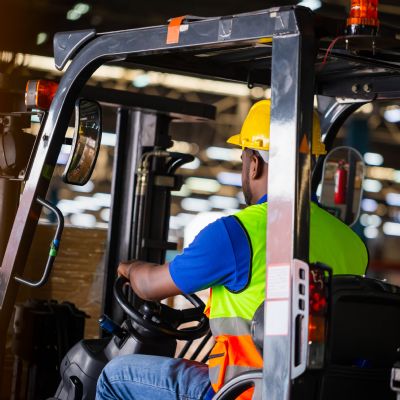“Additive manufacturing promises innovation and manufacturing productivity advances,” says Hugues Jeancolas, vice president of product management at MSC. “However, to truly transform, the new technologies require automated design workflows with embedded process knowledge. We are integrating our structural analysis, design optimization and manufacturing simulation solutions to optimize and validate designs for additive processes before a single part is printed.”
Fully Integrated AM Workflow
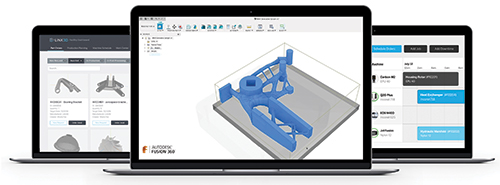 Link3D, in cooperation with Autodesk, Inc., has introduced fully integrated additive manufacturing (AM) workflow using linked Autodesk software to enable end-to-end traceability.
Link3D, in cooperation with Autodesk, Inc., has introduced fully integrated additive manufacturing (AM) workflow using linked Autodesk software to enable end-to-end traceability.
Autodesk Fusion 360 and Netfabb users can associatively queue manufacturing-ready CAD models in Link3D’s production scheduler, including attached information such as support structures or CNC tool path data.
Link3D users with subscriptions to Autodesk software can get linked access to Autodesk’s leading process simulation software, helping to ensure predictability and stability of selective laser melting (SLM) and direct energy deposition (DED) builds. This access control enables full traceability of production data and workflow information, helping to ensure immediate quality standards compliance.“By linking Autodesk’s comprehensive additive and subtractive manufacturing solutions with Link3D’s production scheduler, we are excited to help Link3D provide a managed workflow from order intake to post-processing on the shop floor,” says Alexander Oster, director of additive manufacturing at Autodesk.
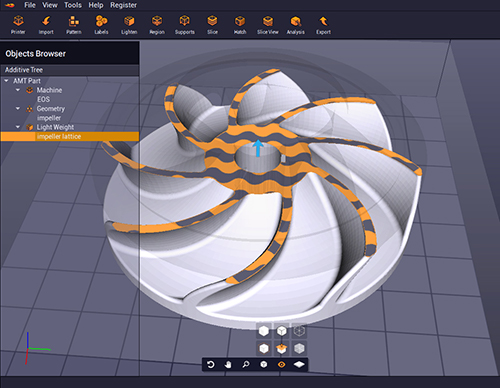 Toolkit for AM Design
Toolkit for AM Design
Built upon the company’s GPU-powered geometry kernel, Dyndrite’s Additive Manufacturing Toolkit (AMT) equips software developers to design next-generation solutions. Capabilities include native CAD file import for maximum quality of 3D-printed output and an integrated-application programming interface for customizable scripting of interactive, automated workflows. The architecture, a horizontal, scalable solution, serves as a foundation for software developers. The toolkit reportedly provides for improved manufacturing execution systems, product data management and product lifecycle management, topology optimization, simulation, and other predictive printing technologies that inform users of the printability of objects before and during production.
Acoustic Process-Monitoring Software
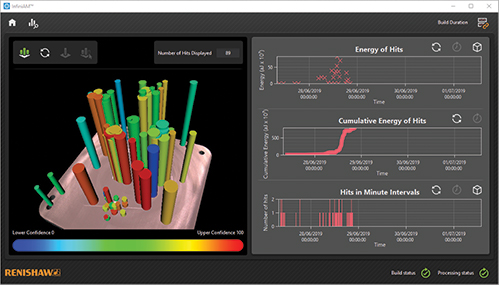 InfiniAM Sonic acoustic process monitoring software enables engineers to detect acoustic events within the AM build chamber, and turn this data into useful information about build quality. The offering, installed into the RenAM 500Q system as a factory-fit option, includes four acoustic energy sensors to detect vibration in the build. The sensors detect minute vibrations and collect these sound waves so that they can be heard, viewed and analyzed. Using four high-frequency sensors in different locations results in a slight time difference, due to the speed of sound. The software uses this to triangulate the position of the noise on the build plate. In addition, the software presents a level of certainty regarding location and magnitude of the noise. This data can be combined graphically with other sensor data to build a comprehensive view of the part and the conditions at the time of build.
InfiniAM Sonic acoustic process monitoring software enables engineers to detect acoustic events within the AM build chamber, and turn this data into useful information about build quality. The offering, installed into the RenAM 500Q system as a factory-fit option, includes four acoustic energy sensors to detect vibration in the build. The sensors detect minute vibrations and collect these sound waves so that they can be heard, viewed and analyzed. Using four high-frequency sensors in different locations results in a slight time difference, due to the speed of sound. The software uses this to triangulate the position of the noise on the build plate. In addition, the software presents a level of certainty regarding location and magnitude of the noise. This data can be combined graphically with other sensor data to build a comprehensive view of the part and the conditions at the time of build.
InfiniAM Sonic works alongside of InfiniAM Central and InfiniAM Spectral, for improved understanding of build quality and accelerated process development. Also available: the InfiniAM Central mobile app, which provides users with notifications on their build process in near real-time.
“The rapid heating and cooling that takes place during an AM build leads to residual stress in the part,” explains David Ewing, AM product manager at Renishaw. “While each laser weld results in a small amount of stress, residual stress can build up within the part, and if it increases past the strength of the metal it may lead to a fracture in the support material or part itself.
“The InfiniAM software suite makes it easier to understand what is happening during an AM build,” Ewing continues. “Spectral and Central give manufacturers eyes inside their AM component and build process, and InfiniAM Sonic provides the ears.”
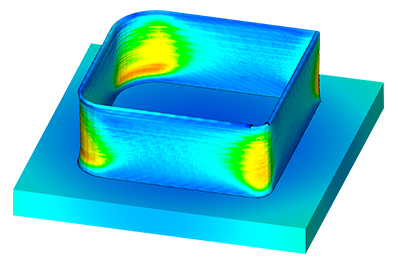 Simulation Solution for Direct Energy Deposition
Simulation Solution for Direct Energy Deposition
Simufact has introduced a dedicated simulation solution to help manufacturers improve DED metal AM processes. Offered as a module inside of Simufact Welding 2020 software, it enables the user to set up robust DED simulation models by importing existing tool paths direct from G-code instead of defining weld paths manually. The software evaluates the stresses, strains, distortions, thermal history and hot spots during manufacturing to identify out-of-tolerance distortions, and recommends compensations. Based on this, the user can adapt the G-code to optimize the DED printing process, which lends itself to the manufacturing of large metal parts.
“DED offers a lot of innovation potential for hybrid manufacturing that combines conventional manufacturing technologies with additive manufacturing,” explains Dr. Hendrik Schafstall, CEO and managing director at Simufact Engineering.
Generative Design, Reverse Engineering and Optimization
An end-to-end solution platform, CogniCAD 3.0 from ParaMatters features expanded generative design for mechanical and thermal applications, reverse engineering tools and algorithmically optimized part orientation for AM. Starting with one-click computer-generated design, or automated reverse engineering, users also can ask the platform to discover the most optimal print orientations for their geometries and algorithmically generated support structures by simulating the metal AM manufacturing process.
Key features:
- Mechanical topology optimization—enhanced design capabilities that consider statics and vibrations, and include features that are more robust compared to the previous version.
- Heat conduction topology optimization—for the design of passive cooling devices, such as sink structures for electronics, automotive, aerospace and other applications. This capability makes possible future multi-physics generative design.
- Reverse engineering—includes mesh healing and conversion to solid CAD models.
- Design of support structures and optimization of print orientation—proprietary machine learning-based approach to fully automate design support structures and find optimal 3D build orientation.
In-Process Quality Assurance for Laser-Bed Printing
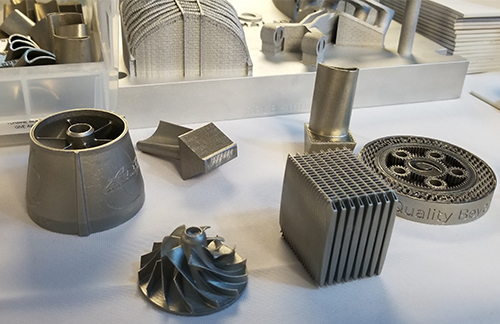 PrintRite3D by Sigma Labs, the company’s proprietary in-process quality-assurance technology for laser-bed printing, is designed to lower AM production costs through real-time monitoring, analysis, feedback and control. Provided as a third-party retrofit package installed on any laser-bed printing machine with capability for machine OEMs to incorporate into their equipment, its nondestructive-analysis technology uses photodiodes to characterize laser light (in the infrared- and visible-light spectrums) and determine thermal signatures of the melt pool, according to Darren Beckett, Sigma Labs’ chief technology officer. The company dubs the signatures, Thermal Emission Density (TED) and Thermal Emission Planck (TEP), as In-Process Quality Metrics (IPQM), which allow users to see internal thermal signatures and melt-pool disturbances. TED represents the input process parameters and material response, explains Beckett, while TEP represents the temperature of the region of energy deposition. Both IPQMs are calculated automatically and are available during the process and immediately after build completion.
PrintRite3D by Sigma Labs, the company’s proprietary in-process quality-assurance technology for laser-bed printing, is designed to lower AM production costs through real-time monitoring, analysis, feedback and control. Provided as a third-party retrofit package installed on any laser-bed printing machine with capability for machine OEMs to incorporate into their equipment, its nondestructive-analysis technology uses photodiodes to characterize laser light (in the infrared- and visible-light spectrums) and determine thermal signatures of the melt pool, according to Darren Beckett, Sigma Labs’ chief technology officer. The company dubs the signatures, Thermal Emission Density (TED) and Thermal Emission Planck (TEP), as In-Process Quality Metrics (IPQM), which allow users to see internal thermal signatures and melt-pool disturbances. TED represents the input process parameters and material response, explains Beckett, while TEP represents the temperature of the region of energy deposition. Both IPQMs are calculated automatically and are available during the process and immediately after build completion.
With these data, users can ensure that printing occurs within set parameters. Should the data reveal out-of-parameter conditions, users receive warnings in real time and software identifies problem areas on the part. A company white paper (sigmalabsinc.com/wp-content/uploads/2019/02/TEP-CT-correlation-Sigma-Labs-Quality-Assurance.pdf) describes the physics behind this technology.
Ensuring Traceability, Quality
The Assure quality control system from Velo3D enables visibility into every layer of the build through real-time algorithms. The offering predicts bulk material properties for each part through a multi-sensor defect-detection system. Print health is determined by combining data from multiple sensors, including melt pool-emission monitoring and X, Y and Z mapping of the powder bed to provide reliable real-time indication of part quality. This system accelerates the move to production by verifying part-to-part consistency. Moreover, Assure ensures printer health by tracking and reporting critical parameters (optics, sensors, consumables, powder-bed quality) prior to build. During a build, Assure validates that these parameters stay in spec and substantiates the part quality needed for volume production by predicting bulk material properties in real time for each part. 3DMP
See also: Renishaw Inc., Simufact Engineering Gmbh, MSC Software Corp., Sigma Additive Solutions, Link3D
Technologies:
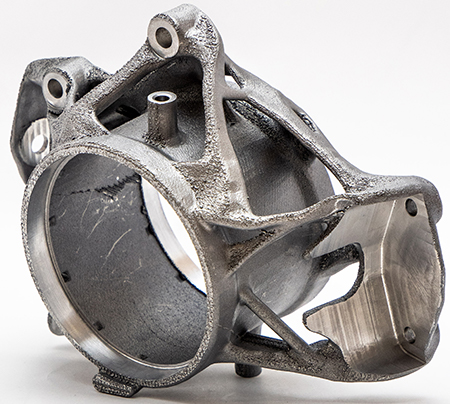







 Link3D, in cooperation with Autodesk, Inc., has introduced fully integrated additive manufacturing (AM) workflow using linked Autodesk software to enable end-to-end traceability.
Link3D, in cooperation with Autodesk, Inc., has introduced fully integrated additive manufacturing (AM) workflow using linked Autodesk software to enable end-to-end traceability.  Toolkit for AM Design
Toolkit for AM Design InfiniAM Sonic acoustic process monitoring software enables engineers to detect acoustic events within the AM build chamber, and turn this data into useful information about build quality. The offering, installed into the RenAM 500Q system as a factory-fit option, includes four acoustic energy sensors to detect vibration in the build. The sensors detect minute vibrations and collect these sound waves so that they can be heard, viewed and analyzed. Using four high-frequency sensors in different locations results in a slight time difference, due to the speed of sound. The software uses this to triangulate the position of the noise on the build plate. In addition, the software presents a level of certainty regarding location and magnitude of the noise. This data can be combined graphically with other sensor data to build a comprehensive view of the part and the conditions at the time of build.
InfiniAM Sonic acoustic process monitoring software enables engineers to detect acoustic events within the AM build chamber, and turn this data into useful information about build quality. The offering, installed into the RenAM 500Q system as a factory-fit option, includes four acoustic energy sensors to detect vibration in the build. The sensors detect minute vibrations and collect these sound waves so that they can be heard, viewed and analyzed. Using four high-frequency sensors in different locations results in a slight time difference, due to the speed of sound. The software uses this to triangulate the position of the noise on the build plate. In addition, the software presents a level of certainty regarding location and magnitude of the noise. This data can be combined graphically with other sensor data to build a comprehensive view of the part and the conditions at the time of build.  Simulation Solution for Direct Energy Deposition
Simulation Solution for Direct Energy Deposition  PrintRite3D by Sigma Labs, the company’s proprietary in-process quality-assurance technology for laser-bed printing, is designed to lower AM production costs through real-time monitoring, analysis, feedback and control. Provided as a third-party retrofit package installed on any laser-bed printing machine with capability for machine OEMs to incorporate into their equipment, its nondestructive-analysis technology uses photodiodes to characterize laser light (in the infrared- and visible-light spectrums) and determine thermal signatures of the melt pool, according to Darren Beckett, Sigma Labs’ chief technology officer. The company dubs the signatures, Thermal Emission Density (TED) and Thermal Emission Planck (TEP), as In-Process Quality Metrics (IPQM), which allow users to see internal thermal signatures and melt-pool disturbances. TED represents the input process parameters and material response, explains Beckett, while TEP represents the temperature of the region of energy deposition. Both IPQMs are calculated automatically and are available during the process and immediately after build completion.
PrintRite3D by Sigma Labs, the company’s proprietary in-process quality-assurance technology for laser-bed printing, is designed to lower AM production costs through real-time monitoring, analysis, feedback and control. Provided as a third-party retrofit package installed on any laser-bed printing machine with capability for machine OEMs to incorporate into their equipment, its nondestructive-analysis technology uses photodiodes to characterize laser light (in the infrared- and visible-light spectrums) and determine thermal signatures of the melt pool, according to Darren Beckett, Sigma Labs’ chief technology officer. The company dubs the signatures, Thermal Emission Density (TED) and Thermal Emission Planck (TEP), as In-Process Quality Metrics (IPQM), which allow users to see internal thermal signatures and melt-pool disturbances. TED represents the input process parameters and material response, explains Beckett, while TEP represents the temperature of the region of energy deposition. Both IPQMs are calculated automatically and are available during the process and immediately after build completion. 
